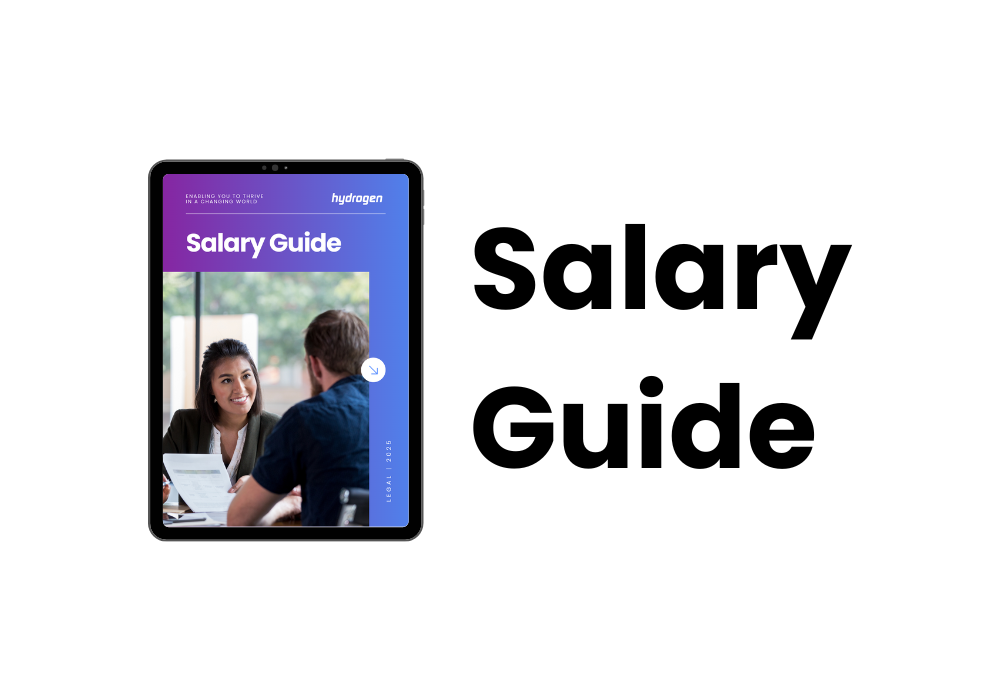How to handle the threat of rising private practice salaries: a guide for GCs
The seemingly inexorable rise of law firm salaries poses difficult challenges to companies trying to recruit lawyers in-house (not to mention retaining the ones they have already!). The legal press has been awash with reports of yet more pay hikes and the price war is showing no signs of abating. Putting aside the US law firms (with whom companies recruiting in-house have never really sought to compete with), pay increases have been ubiquitous across the UK private practice market everywhere from the Magic Circle to West End boutiques. Inevitably, this has had a bearing on companies’ ability to recruit in-house counsel, and we are hearing more and more often from GCs expressing concern at not attracting candidates of the same calibre they’d previously taken for granted.
–
Law firm salaries are on the rise
In May 2022, Freshfields boosted starting NQ salaries to £125,000. However, it’s not just the Magic Circle leaving in-house lawyers’ employers far behind, with other City and national law firms announcing generous hikes; Addleshaw Goddard has announced it will increase NQ base salary to £95,000, bringing them in line with the likes of BCLP and Eversheds (London). A mid-level associate with around 3 years’ PQE can command around £118,000 with the likes of Stephenson Harwood, whilst firms such as CMS are offering £130,000+ for 5-6 PQE candidates. Historically, in-house employers would match (or at least get very close to) remuneration at firms in those brackets but increasingly we are seeing companies offering salaries that amount to a 30-40% drop. On top of that, sign-on bonuses have become the norm and firms are frequently offering golden handshakes worth as much as £10,000-£20,000.
–
What’s the impact?
As the compensation gulf has widened, many private practice candidates are viewing a move in-house as less desirable. This doesn’t just apply to those who are ‘money motivated’, as people tend to live within their means, and we are finding that many simply cannot afford the pay cuts that are being expected of them. Fears over the rising cost of living only exacerbate this. It’s nothing new or unusual for lawyers from certain City law firms to have to accept a modest drop upon going in-house – however, the severity of pay cuts that companies are now expecting them to take is unprecedented.
Another consequence is that candidates are putting off making an in-house move until later in their careers (if considering one at all). This is at odds with the level at which companies most commonly hire, with most in-house positions pitched between 1 and 5 years’ PQE. Typically, it’s more difficult to recruit more junior roles as associates opt to remain in private practice and maximise their earning potential whilst they can, before reconsidering a move in-house at a later stage. This is less of an issue at the more senior end of the market as many firms still have an ‘up or out’ culture, meaning the most experienced senior associates are more likely to accept a drop in pay if they’re not going to be made up or don’t want to be a partner.
When lawyers have committed to making a move, it’s not unusual to see intense bidding wars between companies competing for the same talent. Multiple offers have become the norm. Whilst the bidding wars are especially fierce in private practice, we are noticing companies go outside of their initial budget to secure lawyers they really want. This tends to favour smaller, more nimble companies who are less burdened by rigid corporate pay bands, which are almost invariably obsolete in today’s legal market.
What can you do about it?
Let’s begin by stating the obvious…

Pay more!
This is clearly easier said than done but we firmly believe that the increasing gulf in pay is unsustainable. Companies do not need to match the top City law firms (not referring to the US and Magic Circle, who are in a league of their own), but they do need to stop the gap from getting even bigger unless they’re prepared to drastically reassess the profile of the candidate they’ll consider hiring. At the very least, companies should be transparent regarding bonus potential (or better still, offer a minimum guarantee) as well as giving visibility on future pay reviews – for lawyers moving from private practice, it’s not just the drop at the point of entry that they worry about but how far behind they will fall in the years to come.
However, we appreciate these kinds of shifts aren’t always possible in the short term, so what else can you do to overcome a compensation shortfall?
Be open to other skillsets
The most in-demand skill set in sport, media and entertainment is commercial law, which happens to be one of the most sought-after practice areas everywhere else! Do you really need someone from a commercial/TMT practice for your 2 PQE commercial role? Perhaps you do for a senior role, but at junior/mid-level, you could attract a much wider pool of extremely capable, smart (and ultimately better!) candidates by considering people from other departments.
We’ve seen countless examples of successful recruits transitioning from practice areas such as corporate and finance – they might not have the standalone commercial contracts drafting experience, but bright, well-trained lawyers pick things up quickly! Too few legal managers take advantage of this.
You might be wondering how this relates to salary. Well, not only could you end up with a better candidate but lawyers from other areas are much more likely to accept a cut to break into the sports, media, and entertainment space. To use the commercial lawyer example again, they are in such high demand that they hold the most bargaining power, and in most cases, someone will eventually meet their price. If you are struggling to meet their salary expectations, you are much more likely to find success by giving somebody else a shot who may otherwise be overlooked. Ironically, the likes of corporate and finance lawyers tend to be among the best paid in private practice, but you could find plenty who’d jump at the chance to do something they’re passionate about and many will be willing to compromise on pay for that opportunity. Commercial lawyers simply do not need to be so flexible!


Offer other perks
Most importantly, a genuinely flexible approach to hybrid working is a powerful tool in attracting candidates. Demanding full-time presence in the office is a significant deterrent to an overwhelming majority of candidates. To be regarded “on par”, companies should consider a pattern of 2-3 days in the office with the rest WFH. Other benefits that can make companies stand out from the crowd are generous holiday allowances (some of our clients have increased from 25 to 30 days, plus bank holidays, which has been hugely popular), charity days, and company incentives. Many are also modernising their benefits with diversity and inclusion front of mind – a couple of recent examples we’ve seen are fertility support and menopause leave. Even for those who wouldn’t use those benefits, the positive message it sends about a company’s culture and values is very powerful.
Interviews: Sell first, test later!
A good interview process should be a two-sided affair and just as much importance should be attached to the candidate learning about you and your company. In the past, a typical process might have involved a couple of rigorous, testing interview stages until a preferred candidate emerged; only then would a company go into ‘sell-mode’ to try to entice their favourite onboard. This method has been turning on its head in the last few years, but it has become even more outdated in today’s market when the candidates hold most of the cards.
One of the most effective things you can do without spending more money is to invest more time in first-round interviews to really sell why your company is a great place to work. This doesn’t have to amount to giving the candidates a free pass (in most first stage interviews, candidates will still be expected to talk through their career history and provide background on why they’re considering a move) but applicants should always come away from the interview with an excellent understanding of what the role would look like and, most importantly, to have gained an impression on how they’d fit into the team. Whilst salary will never cease to be important, candidates consistently rank “the people” as the key factor when deciding on a job move. Candidates are much more likely to warm up to interviewers who break the ice by introducing themselves first and then summarise the role they’re recruiting for and what they need. It’s also important that you invest a good chunk of time in answering any questions the candidate has. Once that groundwork has been laid, you’ll have a much better-invested pool of candidates and, if needed, you can be more testing at a second round – by then they’ll be much more engaged in you and the company.


Give feedback
Demonstrate your interest from inception by providing thorough feedback following interviews and throughout the process. Interview feedback should not just be limited to candidates you are unfortunately turning down (though doing that is of course an important courtesy) but thought should also be given to passing on positive feedback to candidates you do wish to progress with. This is often ignored, as if simply advancing candidates to the next stage of the process is good enough news! Tell your recruiter what you liked about the candidate and why you think they’d be a good fit. Better still, perhaps consider reaching out directly to candidates to say thank you and that you really enjoyed meeting them. Similarly, once you have decided who you want to hire and your recruiter has broken an offer, follow up with the candidate to congratulate them, tell them how much you’re hoping they’ll accept to join the team, and welcome them to contact you if they have any questions. Personal touches go a long way in such a competitive market and candidates are much more likely to accept a sacrifice in terms of pay if they connect with you.
Try these tips out for yourself! If you’d like any further information or advice, don’t hesitate to get in touch – I’d love to know how you get on.













